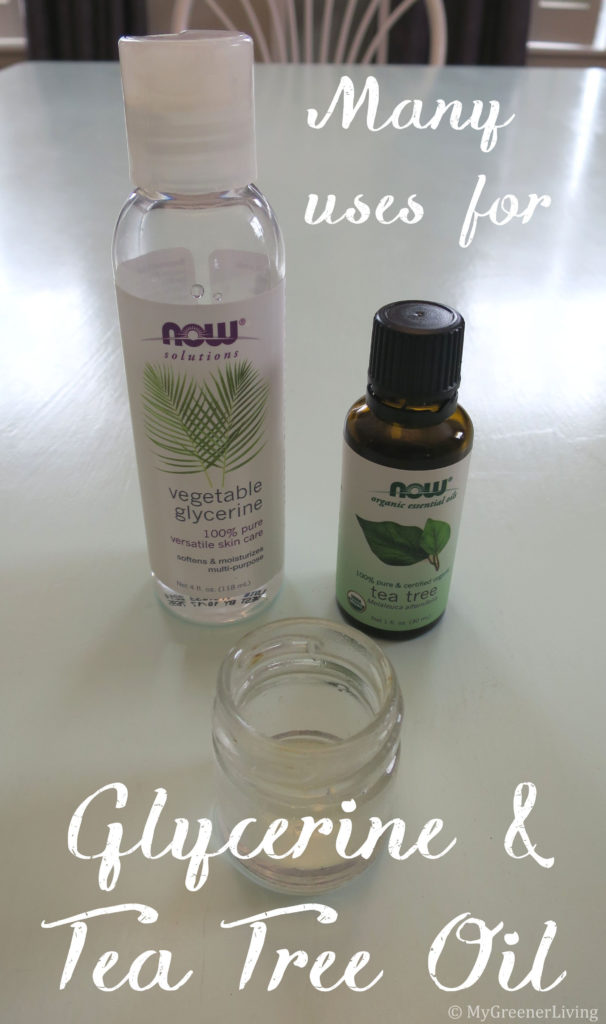I wasn’t looking for a new toothpaste or tooth powder recipe. I was happy with my baking soda tooth powder. But one day, I happened across a blog post or website that had a tooth powder recipe using bentonite clay. I had some (calcium) bentonite clay on hand from one of my natural deodorant recipes (it didn’t make it into my latest and favorite deodorant, but I plan to formulate another that combines bentonite clay and zinc ricinoleate to get the benefits of both). Anyway, I was intrigued so I researched bentonite clay a bit, and liked what I found (more on that below). So I mixed up bentonite clay tooth powder.

Disclaimer: This post contains affiliate links. See my Disclosure Policy for more information.
The New Tooth Powder Recipe
My new favorite tooth powder recipe isn’t much more complicated than my original one – just 2 ingredients!
- 1 part baking soda
- 1 part calcium bentonite clay
Intructions
Pour equal parts baking soda and bentonite clay into a non-metal container. Stir to mix, or put on a non-metal cover and shake to blend.
I use a 1/2 cup mason jar with a plastic lid, estimate the measurements, put the cover on tightly and shake well to blend the baking soda and bentonite clay. If there are clumps of baking soda, I use a popsicle stick to break up.
I use old, empty prescription pill bottles for travel tooth powder containers.

How I use bentonite clay-baking soda tooth powder
To use my bentonite clay and baking soda tooth powder, I wet my toothbrush, shake off the excess water, then dip the edges of the bristles in the tooth powder. Then I just brush like normal! I spit and rinse out my mouth after brushing.
What is it like, using this tooth powder?
My baking soda tooth powder is very salty tasting. I like that this tooth powder is less salty, because basically I am using half as much of the salty ingredient in each brushing. I do not notice any taste to the bentonite clay, and it is very, very fine so I do not feel it. However, I do very occasionally notice that if I do not rinse my mouth well, I feel a little “grit” in my mouth. Nothing compared to sand! If this happens, I just take a sip of water and swirl it around, spit, and the grit is gone. The reason I never get this lingering grit with the pure baking soda tooth powder is because baking soda is water soluble and dissolves in my saliva.

I prefer this tooth powder over my original recipe, because I prefer the more mild taste, and I like the (at least possible) benefits to using bentonite clay on my teeth.
I also still use activated charcoal as a tooth whitening tooth powder – about once per week.
Using this bentonite clay and baking soda tooth powder daily, with the charcoal tooth powder as well, for over a year, I have strong, healthy, white teeth. Obviously there are tons of other factors that impact oral health, but for me, these tooth powders are part of my healthy oral hygiene routine.
What are the benefits of bentonite clay in a tooth powder?
Bentonite clay has been used throughout history and has many believed and scientifically proven benefits. I like it in a tooth powder because it binds to toxins, may be antibacterial, and contains minerals like calcium that *might* (not sure I believe this one) help remineralize and strengthen teeth. Additioanlly, bentonite clay is very fine so it doesn’t scratch my teeth, yet it has enough “grit” to gently scrape away plaque from my teeth.
I am pretty new to experimenting with bentonite clay. Once I have tried it out in other applications, I’ll post on other uses. However, if you’re looking for information now, Wellness Mama has a great post about the benefits and her uses of bentonite clay.
Have you tried any alternatives to standard toothpaste? Please share (the good or bad!) in the comments below.



